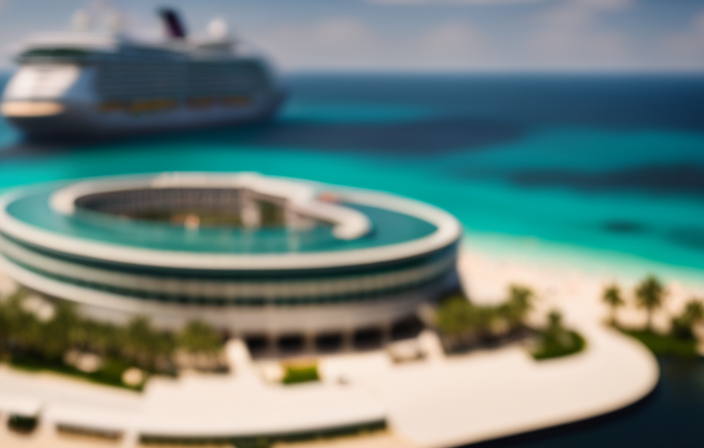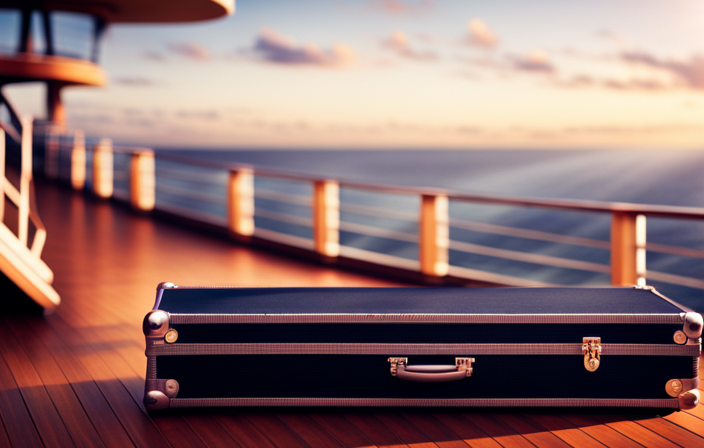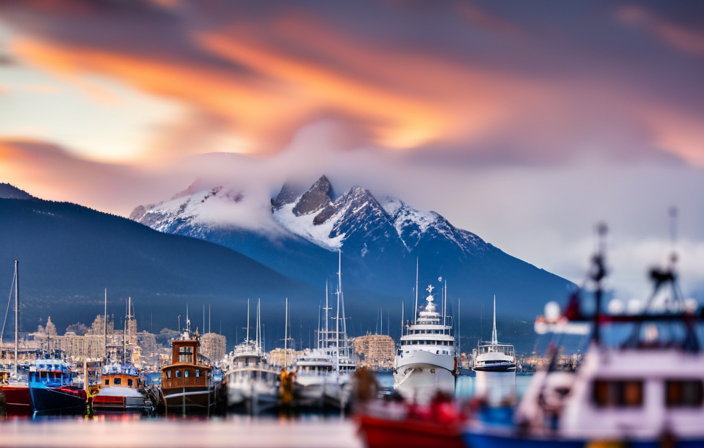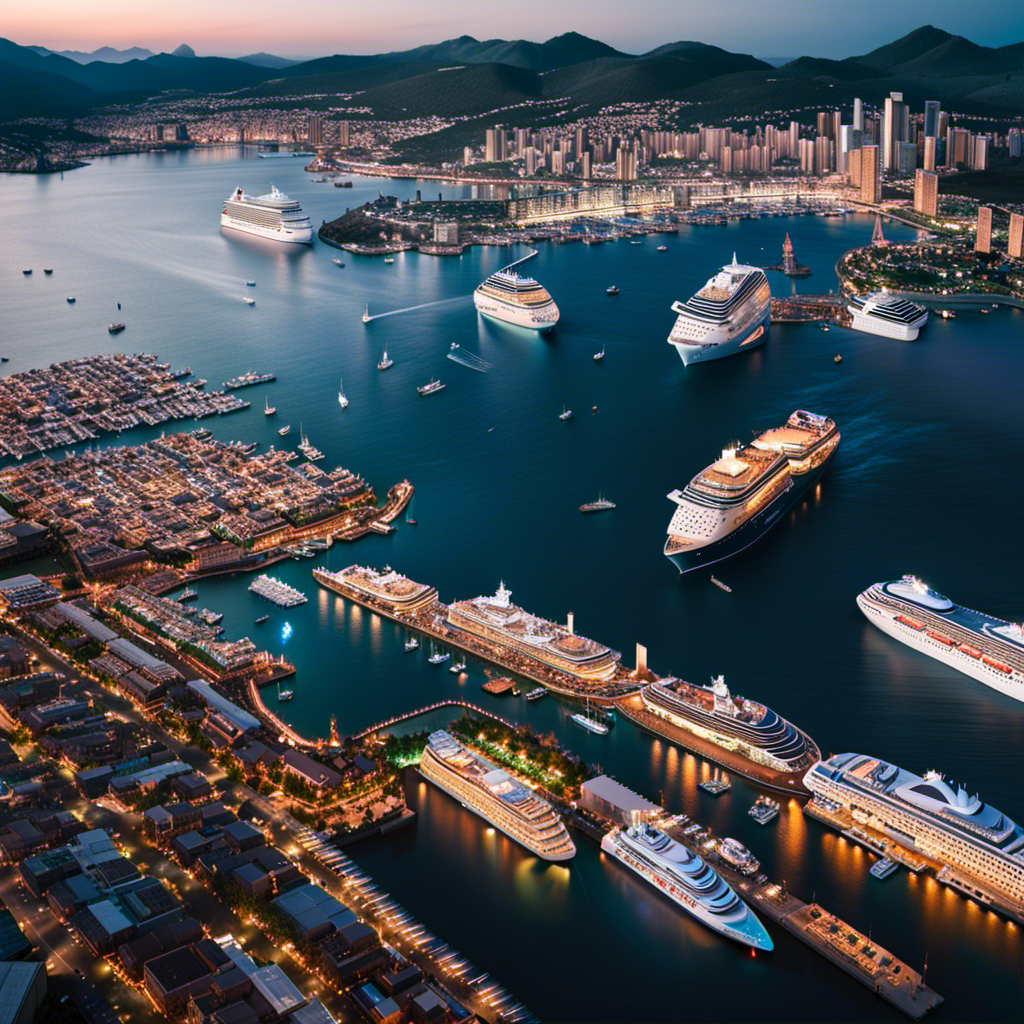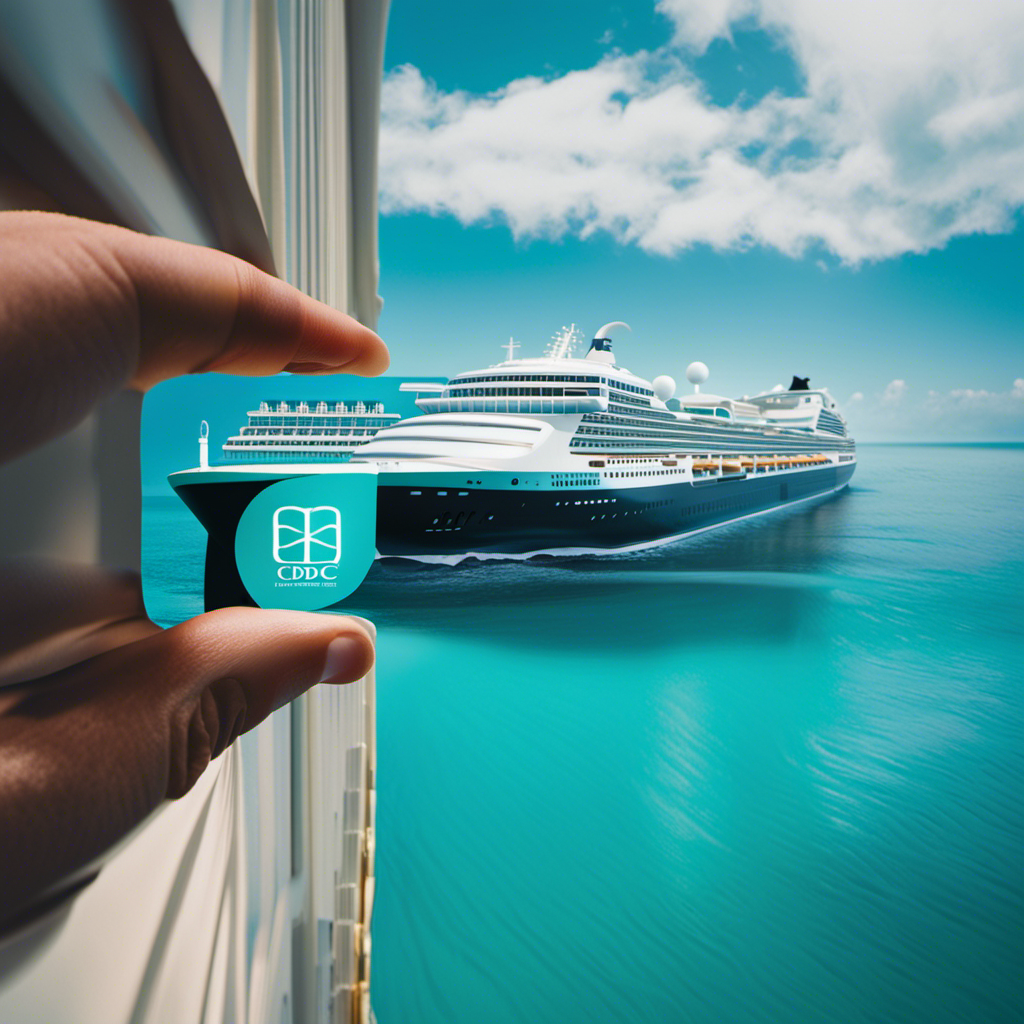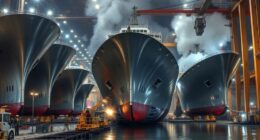Did you know that every year, more than 30 million people choose to go on cruise vacations?
With the popularity of cruise vacations on the rise, it’s natural to wonder just how safe these floating cities really are.
In this article, I will delve into the world of cruise ship safety, exploring the extensive regulations and inspections that ensure passenger well-being.
I’ll also examine the emergency preparedness and response protocols in place, as well as the quality of onboard medical facilities and staff.
Additionally, we’ll take a closer look at the safety training provided to crew members and the security measures and surveillance systems employed to keep passengers safe.
From the safety features of cruise ships to incident reporting and investigation procedures, this article will provide a comprehensive overview of cruise ship safety.
So let’s set sail on this journey to uncover the truth about the safety of cruise ships.
Key Takeaways
- Incident reporting and investigation are essential for the highest level of security for passengers.
- Thorough investigations provide learning opportunities and help in preventing similar incidents.
- Industry standards and certifications ensure that cruise ships meet the highest safety regulations.
- Modern cruise ships are built with advanced technology and multiple safety features to prevent accidents.
Safety Regulations and Inspections
You’ll be glad to know that cruise ships are subject to rigorous safety regulations and inspections. These regulations ensure that cruise ships meet specific safety standards and undergo regular inspections to maintain their compliance.
When it comes to emergency response, cruise ships are required to have well-defined emergency plans in place. This includes conducting regular drills and exercises to prepare the crew for various emergency scenarios. Crew members also undergo extensive training to ensure they’re equipped with the necessary skills to handle emergencies effectively. This includes training in fire safety, first aid, and evacuation procedures.
In addition, cruise ships are required to have a trained medical staff on board to provide immediate medical assistance if needed. With these safety regulations and crew training in place, cruise ships are well-prepared to handle emergencies and ensure the safety of passengers and crew members.
Moving on to emergency preparedness and response…
Emergency Preparedness and Response
Prepare yourself for the unexpected as cruise liners are equipped with comprehensive emergency protocols and efficient response systems in place. In the event of an emergency evacuation, cruise ships have well-coordinated procedures to ensure the safety of all passengers and crew members. From lifeboats to evacuation slides, these large vessels are equipped with various means of evacuation. Additionally, communication protocols are established to quickly disseminate important information to passengers, allowing them to stay informed and follow instructions in a timely manner. To engage the audience, here is a table summarizing some of the emergency preparedness measures found on cruise ships:
| Emergency Preparedness Measures |
|---|
| Regular emergency drills |
| Advanced fire detection systems |
| Satellite communication systems |
These measures contribute to the overall safety and security of cruise ship passengers. Moving forward, let’s discuss the onboard medical facilities and staff who play a crucial role in ensuring passengers’ well-being.
Onboard Medical Facilities and Staff
Get ready to experience the world of onboard medical facilities and staff, because these lifesaving superheroes are here to ensure your health and well-being throughout your cruise adventure.
Cruise ships are equipped with state-of-the-art onboard medical equipment, including emergency rooms, pharmacies, and diagnostic facilities.
The medical staff on board are highly qualified professionals, consisting of doctors, nurses, and paramedics with extensive training and experience in emergency medicine. They are available 24/7 to provide medical care and assistance to passengers in need.
From treating minor illnesses and injuries to responding to more serious medical emergencies, the onboard medical team is well-prepared to handle a wide range of medical situations.
Their expertise and dedication to passenger safety contribute to the overall peace of mind while cruising.
As we transition to the next section about safety training for crew members, it is important to recognize the vital role that onboard medical facilities and staff play in ensuring the safety and well-being of everyone on board.
Safety Training for Crew Members
The intense safety training for crew members equips them with the skills and knowledge to handle any emergency situation that may arise at sea. Crew members undergo rigorous training programs that ensure they’re qualified to respond effectively to various scenarios.
They’re trained in first aid, firefighting, crowd management, and evacuation procedures. Additionally, crew members receive specialized training on the use of safety equipment such as lifeboats, life jackets, and fire extinguishers. This training is regularly updated to keep crew members up to date with the latest safety protocols.
By providing crew members with the necessary qualifications and ensuring they have access to appropriate safety equipment, cruise ships prioritize the safety and well-being of their passengers.
Transitioning into the next section, security measures and surveillance systems are also in place to further enhance the overall safety of cruise ships.
Security Measures and Surveillance Systems
To ensure a high level of security, you must familiarize yourself with the extensive surveillance systems and stringent security measures implemented onboard.
Cruise ships have comprehensive security protocols in place to protect the safety and well-being of both crew members and passengers. Advanced technology advancements have greatly enhanced these security measures, allowing for real-time monitoring and detection of potential threats. From closed-circuit television cameras strategically placed throughout the ship to access control systems, cruise ships are equipped with state-of-the-art surveillance systems.
Additionally, security personnel are trained to respond swiftly and effectively to any security breaches or emergencies that may arise. These measures are crucial in maintaining a safe environment onboard the ship.
Moving forward, let’s now discuss passenger safety briefings and drills, which play a vital role in ensuring everyone’s well-being.
Passenger Safety Briefings and Drills
After discussing the security measures and surveillance systems on cruise ships, it’s important to touch upon another crucial aspect of passenger safety: passenger safety briefings and drills.
These briefings and drills are essential for ensuring that passengers are aware of the ship’s safety protocols and know what to do in case of an emergency. Cruise ships employ various communication methods to engage passengers during these sessions, including announcements, videos, and live demonstrations.
This ensures that all passengers receive the necessary information and are well-prepared in the event of an emergency. By actively involving passengers in safety briefings and drills, cruise ships foster a sense of responsibility and preparedness among their guests.
These measures not only enhance passenger safety but also contribute to the overall peace of mind and enjoyment of the cruise experience. Moving forward, let’s now explore the safety features of cruise ships.
Safety Features of Cruise Ships
One cannot help but marvel at the impressive array of advanced security measures implemented on these floating cities of luxury. Cruise ships are equipped with state-of-the-art safety features advancements, thanks to constant technological innovations.
From the moment passengers step on board, they are surrounded by a comprehensive network of surveillance cameras, ensuring that all areas are monitored at all times.
In the event of an emergency, cruise ships are equipped with advanced fire suppression systems that can quickly extinguish any potential fires. Additionally, the ships have sophisticated navigation systems that can detect any obstacles in their path, ensuring a smooth and safe journey.
These safety features advancements are constantly being updated and improved to provide the highest level of security for passengers.
As we move into the next section about incident reporting and investigation, it is important to understand the foundation of safety that these features provide.
Incident Reporting and Investigation
Imagine yourself on a cruise vacation, where every incident, no matter how small, is promptly reported and thoroughly investigated for the safety and well-being of all passengers. Incident prevention is a top priority on cruise ships, and crew members are held accountable for ensuring a safe environment.
Here are four key reasons why incident reporting and investigation are essential:
-
Transparency: By promptly reporting incidents, cruise lines demonstrate transparency and a commitment to passenger safety.
-
Learning opportunities: Thorough investigations help identify underlying causes and provide valuable lessons for preventing similar incidents in the future.
-
Passenger reassurance: Passengers feel reassured knowing that every incident is taken seriously and addressed promptly.
-
Continuous improvement: By constantly evaluating and investigating incidents, cruise lines can implement necessary changes to improve safety measures.
As we delve into the subsequent section about industry standards and certifications, it’s important to understand the significance of incident reporting and investigation in maintaining a safe cruise experience.
Industry Standards and Certifications
In the previous section, we discussed the importance of incident reporting and investigation on cruise ships. Now, let’s shift our focus to industry standards and certifications that ensure the safety of these floating resorts.
Cruise ships operate under strict industry standards set by organizations like the International Maritime Organization (IMO) and the Cruise Lines International Association (CLIA). These standards cover various aspects of ship design, construction, maintenance, and operation to ensure passenger safety.
Additionally, cruise lines obtain safety certifications from classification societies such as Lloyd’s Register and DNV GL, which conduct rigorous inspections and audits to verify compliance with international safety regulations. These certifications serve as proof that cruise ships meet the highest safety standards.
Understanding the industry’s commitment to safety is essential in dispelling common misconceptions about cruise ship safety. So, let’s explore these misconceptions further in the next section.
Common Misconceptions about Cruise Ship Safety
Contrary to popular belief, the floating resorts that grace the seas are fortified havens of security, ensuring the utmost protection for all passengers on board. While cruise ship accidents do occur, they are rare and often blown out of proportion by the media. Cruise lines adhere to strict safety standards and regulations set by international maritime organizations. These standards cover everything from fire safety to emergency procedures, ensuring that passengers are well-protected at all times. Additionally, cruise ship passengers have rights that are protected by international laws. These rights include the right to a safe and secure environment, access to medical care, and compensation for any injuries or damages caused by the negligence of the cruise line. It is important for passengers to be aware of their rights and to understand that cruise ships prioritize their safety above all else.
| Common Misconceptions | Reality |
|---|---|
| Cruise ships are prone to sinking | Modern cruise ships are built with advanced technology and multiple safety features that make sinking highly unlikely. |
| Cruise ships are unprepared for emergencies | Cruise ships have comprehensive emergency plans in place and conduct regular drills to ensure the safety of all passengers. |
| Cruise ship accidents are common | While accidents can happen, they are rare occurrences and cruise lines take extensive measures to prevent them. |
| Passengers have no rights on a cruise ship | Passengers have a set of rights that are protected by international laws and regulations. |
| Cruise ships are not safe for families | Cruise ships are designed to cater to families, with extensive safety measures in place to ensure the well-being of children and adults alike. |
Frequently Asked Questions
Are passengers required to undergo any safety training or drills before boarding a cruise ship?
Passengers are indeed required to undergo safety training and drills before boarding a cruise ship. These measures include familiarizing passengers with emergency procedures, such as evacuation routes, life jacket usage, and muster station locations.
How often are safety drills conducted on cruise ships?
Safety drills are conducted regularly on cruise ships to ensure the effectiveness of emergency procedures. The frequency of these drills varies, but they are typically performed at least once per cruise.
Can passengers access the onboard medical facilities 24/7?
Passengers on cruise ships have access to onboard medical facilities 24/7. These facilities are easily accessible and provide round-the-clock medical assistance for any emergencies or health concerns that may arise during the voyage.
What security measures are in place to prevent unauthorized access to the ship?
Cruise ships have the most advanced security protocols to prevent unauthorized access. From biometric identification to CCTV surveillance, every corner is closely monitored. In case of emergencies, the crew is trained in swift emergency response.
How are incidents or accidents on cruise ships reported and investigated?
Cruise ship incident reporting involves immediate notification of the ship’s security team, who then initiate an investigation. Cruise ship accident investigations are conducted by a team of experts who gather evidence, interview witnesses, and analyze data to determine the cause of the accident.
Are all cruise ships prone to fires, or was there a specific issue with the Carnival cruise ship?
The carnival cruise ship fire incident raised concerns about cruise ship safety. While not all cruise ships are prone to fires, this specific issue highlighted the importance of regular inspections and safety protocols. It also prompted the industry to reassess its approach to preventing and responding to onboard fires.
Conclusion
In conclusion, I must say that cruise ships are the epitome of safety and security. They are like floating fortresses, equipped with top-notch emergency response systems, highly trained staff, and cutting-edge surveillance technology.
The onboard medical facilities are like mini-hospitals, ready to handle any ailment or injury that may arise. And let’s not forget about the industry standards and certifications that ensure everything runs smoothly.
So, rest assured, dear readers, your safety is in the hands of experts who take their job very seriously. Bon voyage!

